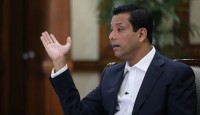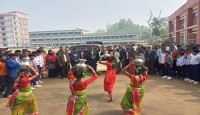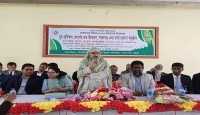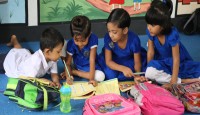Dr. Pamelia Riviere
Who should we hold accountable for the troubling rise of youth gangsters in Bangladesh? Is it the parents, the government, or the political parties responsible for these escalating crimes? Over the past six months, Bangladesh has been engulfed in widespread violence and chaos, primarily instigated by youth groups linked to various political factions. These factions have mobilized young individuals, who are now engaging in a range of criminal activities, including violent confrontations and organized robberies. Business owners and shopkeepers in urban centers, particularly in Dhaka and Chittagong, are increasingly falling victim to these gangs, suffering not only financial losses but also threats to their safety and well-being. As the situation escalates, public frustration has reached a boiling point; reports indicate a significant rise in street harassment, mainly targeting women, who are often ambushed in broad daylight, having their bags and valuables forcibly taken from them. The climate of fear has particularly affected communities, leading to a pervasive sense of insecurity that stifles economic activity and undermines social cohesion.
Witnesses have described harrowing incidents of violence, including daylight murders that have shocked onlookers and left a lasting impression on local neighborhoods. Identifying the root problems of youth gangsters in Bangladesh requires a comprehensive approach that considers various socio-economic factors. One of the most pressing issues is the country's rapidly growing population, which has increased threefold over the past 50 years. This population explosion exacerbates existing social challenges and fuels youth disenchantment. Illiteracy, ignorance and inadequate Family planning programme From a sociological perspective, key factors such as illiteracy, ignorance, and pervasive poverty contribute to inadequate family planning. These issues often stem from a lack of awareness and access to education. The government’s insufficient initiatives in this area further compound the problem. While there have been some commendable efforts—such as grassroots educational programs utilizing cartoons—these initiatives have had limited impact. For instance, women workers have engaged directly with mothers in slums and rural areas to advocate for family planning practices, particularly targeting those with fewer than two children and offering birth control assistance.
Despite these efforts, the outreach and effectiveness have not reached the necessary scale to make a significant difference. Comparative lessons from neighboring countries illustrate the challenges of coercive family planning. India's experience demonstrates that such approaches often backfire, leading to widespread criticism and social issues. Meanwhile, China's one-child policy, despite its initial intentions, resulted in severe demographic imbalances and tragic consequences, including the deaths of many female infants. Therefore, a more humane and collaborative approach to family planning is essential—one that advocates for a "two children are enough" policy in a manner that respects individual rights while addressing population concerns.
It is crucial for the Bangladeshi government to actively engage with educational stakeholders and non-governmental organizations (NGOs) to tackle this issue effectively. This is not an insurmountable challenge, but one that requires immediate attention to foster a sustainable future. Past administrations' neglect of this issue has contributed to the rapid population growth observed in recent decades. Now is an opportune moment to realign efforts towards creating a more stable demographic landscape. In addition to addressing population issues, a significant transformation in the education system is needed to better prepare the youth for employment. The current reliance on theoretical education has proven inadequate in equipping students with the skills necessary for the job market. A shift towards a cooperative and experiential learning model emphasizing hands-on, practical experiences can bridge the gap between education and employment. Such a system would not only enhance students' employability but also instill a sense of confidence and readiness to tackle the demands of an evolving economy.
Deep concern lies in the demographics of Bangladesh's youth population. Deep concern lies in the demographics of Bangladesh's youth population, which is alarmingly high for such a small country. This burgeoning youth cohort, teeming with potential, is one of the most neglected segments of society. If the Bangladesh government continues to overlook the pressing needs of these young individuals, the country could face dire consequences, transforming Bangladesh into an unsafe environment reminiscent of El Salvador. The safety and security of countless Bangladeshis hang in the balance. At this crucial juncture, it appears the interim government is preoccupied with establishing a student political party.
This move may sow further discord and pave the way for chaos in the nation. Reflecting on the previous administration, which held power for 15 long years, I can't help but wonder why initiatives weren't implemented to engage illiterate and school drop-out youth in the workforce. It represents a significant missed opportunity that the former Prime Minister, who governed for an extended period of 15 years, did not prioritize initiatives aimed at integrating the illiterate and school drop-out youth into the workforce. With a staggering 15 percent of the population falling within the critical 15 to 30 age demographic, there is an urgent need for decisive action within the next five years to harness the potential of this vibrant group. Since the revolutionary upheaval on 24th July, Bangladesh has been ensnared in a relentless cycle of violence, marked by tragic incidents of killings, brazen robberies, physical assaults, and heinous acts of sexual violence. It is particularly troubling that various political factions are exploiting this youthful demographic, engaging them as pawns in their violent confrontations.
The challenges faced by the police and army in maintaining law and order in Bangladesh are compounded by the pervasive influence of youth gangs, which have become deeply intertwined with political agendas. Let's urge action for youth engagement. Use these ideas to urge the government to address youth violence and unemployment issues. The interim government must confront this alarming situation with the utmost urgency. This can be achieved by implementing strategic measures that prevent these groups from further involvement in political machinations and by facilitating their meaningful entry into the workforce, thereby redirecting their energy and potential towards constructive endeavors. With the support of over 1,000 NGOs, the vibrant garment sector, and various other industries, a golden opportunity existed to harness these valuable human resources.
Many of these young individuals, burdened by poverty and socio-economic challenges, desperately need financial assistance to navigate an increasingly complex, technology-driven world. Frustration stemming from their meager circumstances often drives them toward illegal activities as they struggle to meet their basic needs. Moreover, this demographic has become an asset, albeit a perilous one, for numerous political parties. They are frequently exploited to carry out illicit activities on behalf of these organizations. To counter this troubling trend, I propose the interim government consider banning student political involvement, shielding students from the distractions of politics during their educational pursuits. However, there remains a window of opportunity to redirect these youths back onto a constructive path, with collaboration from the government and various stakeholders to create a brighter future for our nation.
Dr. Pamelia Riviere is a freelance writer and analyst



.jpg)


.jpg)




